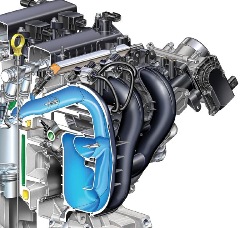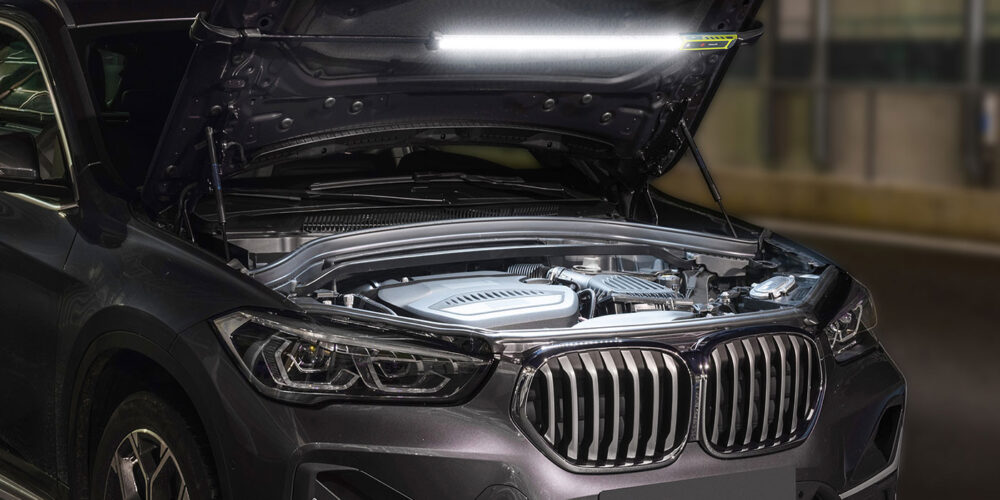
NO- OR LOW-POWER COMPLAINTS
When it comes to no-power complaints, a couple of things should come to mind. As with any diagnosis, your first step should be to hook up your scanner and see what codes are stored. If a code is present, be sure to look at freeze-frame data to see what the conditions were when the code was set. Many times, you’ll have a system lean code as the only hint for the no-power issue, and this coincides with the things we’re thinking about for a low-power issue.
Leave the scanner hooked up for the initial road test so you can look into the system as the car is driven. Look at the temperature parameters to confirm that the coolant and air intake readings are correct and changing as expected.
On the road, look at the fuel trims and calculated load as your window into what the fuel system is being told to do and how well it’s reaching the goal. If all looks good on the intake side, the next step will have you checking exhaust back pressure.
I’m sure we all know what the trim numbers mean at this point; it’s an easy concept to grasp. If there is a minus sign in front of the number, the ECU is removing fuel; no minus sign means fuel is being added. In an ideal situation, the numbers are close to zero, since the only way the ECU knows what the engine needs to meet its fuel requirements will be the pre-cat air/fuel ratio sensor (formerly known as the O2 sensor), with some consideration given to rear O2 sensors.
If you’re faced with a car with a low-power complaint or a rough idle, take a look at the long-term trim. If you have a positive number in the 20s, think about the things that will make it run lean. If you also have a misfire code or a rough idle, don’t overlook the possibility of an intake gasket leak. While it’s not a real common problem, we have seen some on the four-cylinder cars. If you’re looking at a multi-bank engine, make note if both banks are showing a similar number or if it’s just one bank. Freeze-frame data will also tell you when the limit was reached.
You can make some decisions once armed with this information. If the limit was reached at idle, it would have you looking for unmetered air finding its way into the engine. It could be the EGR valve, but it could also be an intake manifold gasket leak or the O-ring seals on the V6s.
On the four cylinders, a leaking intake gasket will usually set a misfire code, along with the system lean code. Usually all it takes is a shot of intake cleaner at the manifold flange and a stethoscope to confirm the diagnosis. The six-cylinder engine’s upper manifold O-ring leaks can be a bit more challenging and, if in doubt, a smoke test will confirm you’re on the right track.
We already talked about the PCV hoses failing, and this will undoubtedly cause a lean condition with or without the noise. Other not-so-obvious sources of vacuum leaks include a leaking EGR valve that’s more common on the older cars (but there are still plenty of them out there), and sticking purge valves on the later cars.
The EGR valve is an easy diagnosis; if exhaust gases are leaking through the valve, it will be noticeably warmer than the adjacent area. The purge valve can be a bit more difficult since the problem is more a sticky valve than it is a hard failure. This is one of the times where you have to rely on what you know and make your best decision. If you have an evap code, along with a system lean with no obvious problem for either, it’s a safe bet that the purge valve is sticking. Any sign of charcoal contamination should have you recommending a new canister.
On the other hand, if the freeze-frame information is telling you that the code was set at speed, the idle is smooth and the driver reports no additional symptoms, think about what makes it lean under those conditions. My first thought would be the mass air sensor; by now, we should all be aware of how debris finds its way to the hot-wire sensor. If you’re going on an initial road test after checking and clearing codes and memory, set the scanner up to monitor the fuel trims and calculated load. Before you hit the road, make sure the short-term trim is reacting as expected.
On the road, do a couple of wide-open accelerations making note of the calculated load — it should be a 90-plus percentage. If not, take a close look at the air sensor for contamination.
The sensors can be carefully cleaned, and we’re having good luck with some of the products designed for the job; but be gentle as they are fragile. We look at cleaning the sensor as part of the diagnostic process and recommend a new sensor to ensure a successful repair (note that on the invoice to prevent any misunderstandings).
Once the problem is diagnosed and repaired, make sure that the bolts holding the sensor to the air filter housing are tight, that the air filter box is not allowing unfiltered air into the sensor, and that the air filter element is of high quality and in good condition. There have also been reports of the sensor housing bolts coming loose, letting dirt into the air stream. Be sure all the air is being filtered.








